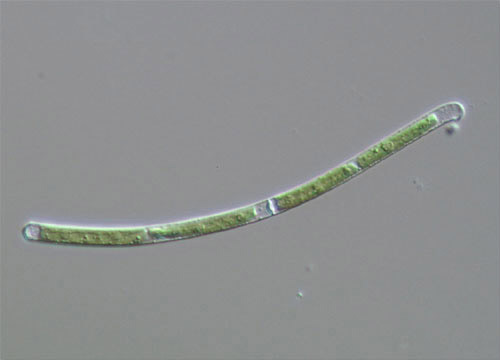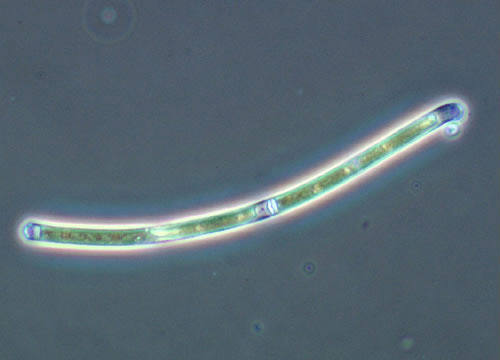Cyanobacteria (Tolypothrix)
Tolypothrix is a genus of cyanobacteria that occurs in small tufts either floating in torpid water or attached to plants and rocks. Cyanobacteria are the oldest known fossils, dating back over three and a half billion years.
 DIC
DIC
 Phase
Phase
Phase
Frequently referred to as blue-green algae, cyanobacteria are photosynthetic and can manufacture their own food. However, though cyanobacteria resemble algae in many ways, they are prokaryotic and are classified with other bacteria in the kingdom Monera. The characteristic blue-green color they are known for is a result of a combination of chlorophyll and the blue pigment phycobilin. Yet, some species may contain additional pigments and may appear in various other colors, such as black, brown, yellow, and red.
DIC
Cyanobacteria are important to life on Earth in many ways. The oxygen in the atmosphere that humans depend upon was largely generated by an abundance of cyanobacteria billions of years ago. Cyanobacteria help convert atmospheric nitrogen into a form that can be consumed by plants and are, therefore, useful as a natural fertilizer that is beneficial to crop cultivation around the world. Moreover, the organisms are active in reducing erosion by facilitating the binding together of soil particles and many have formed symbiotic relationships with other plants.













